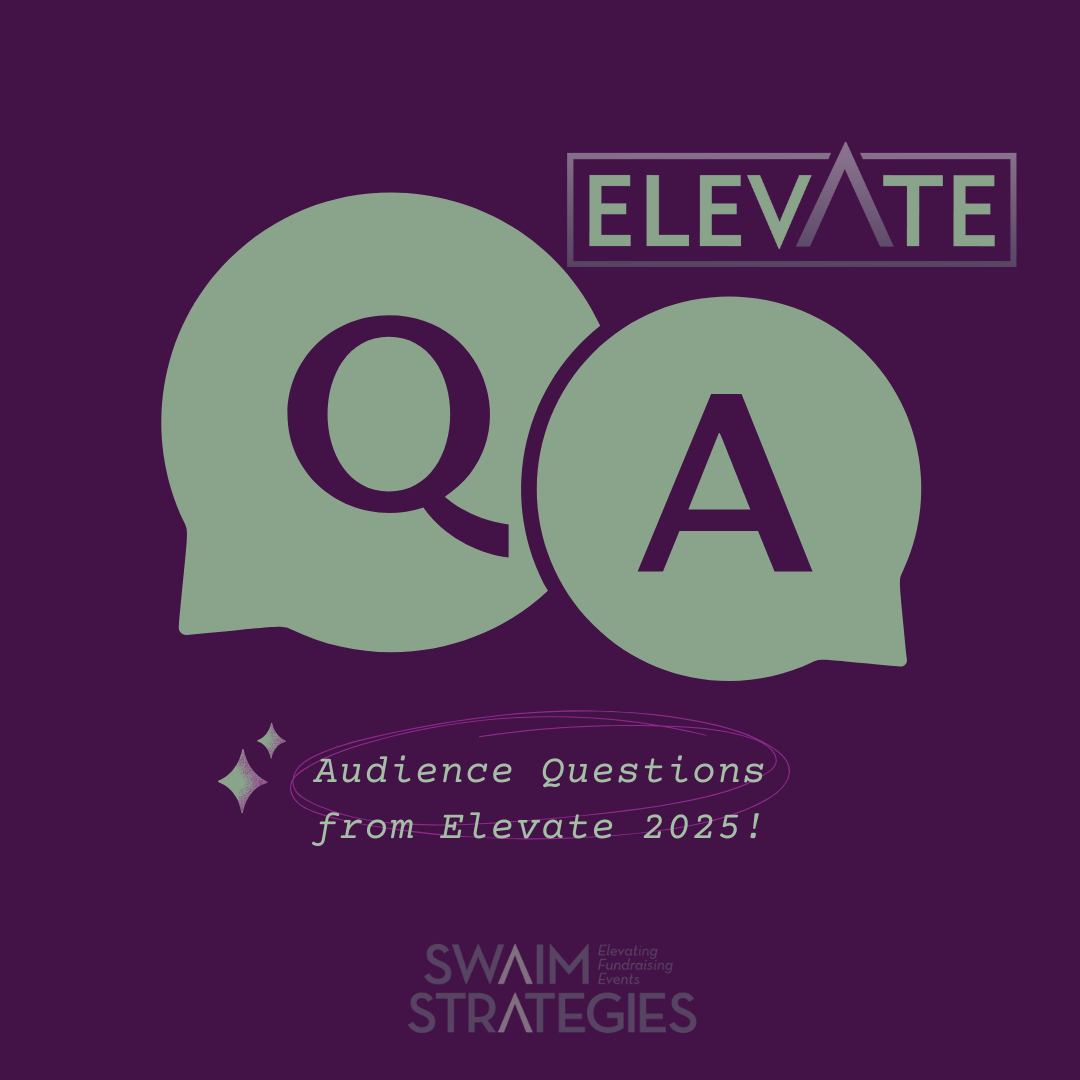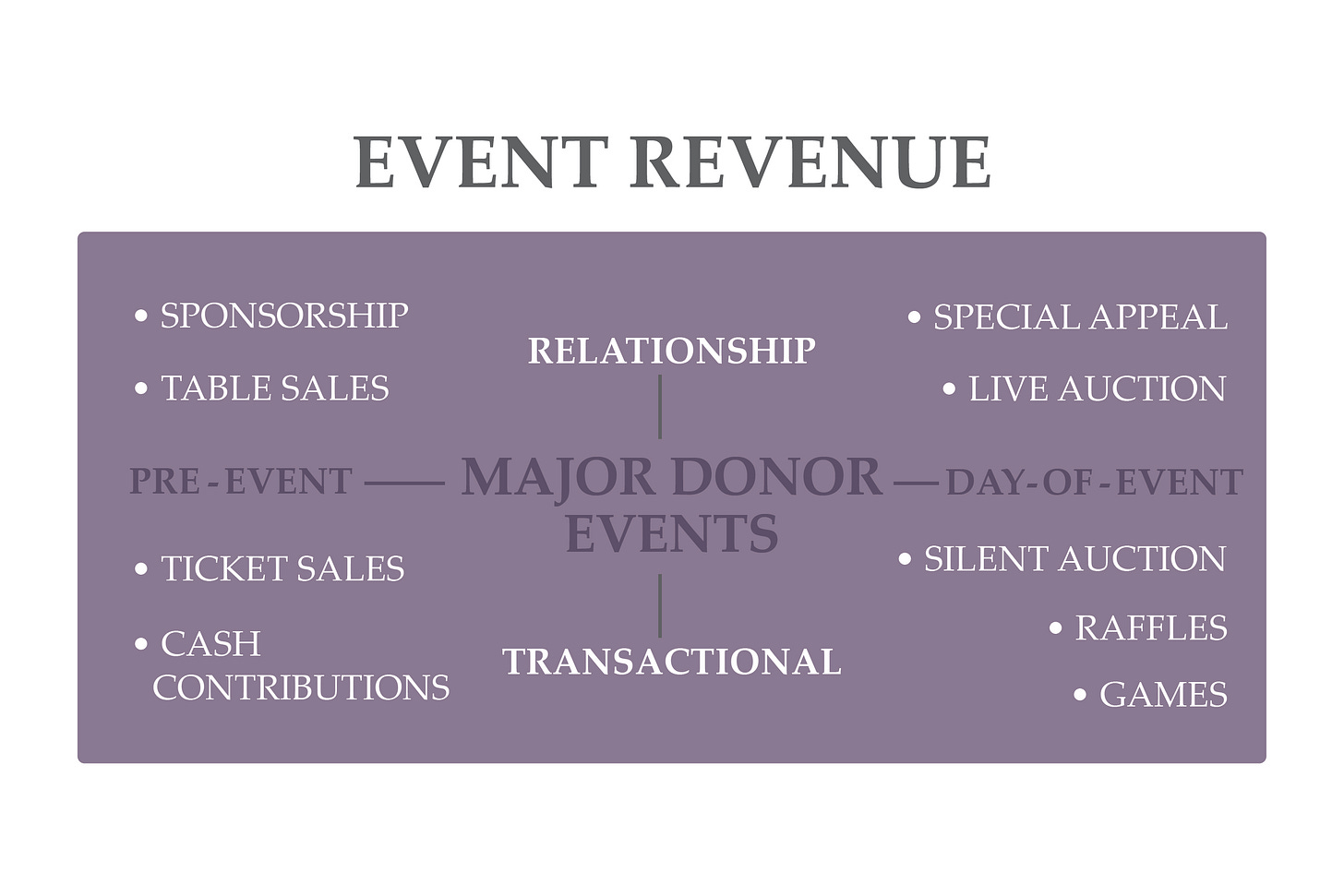How to Design Equitable Ticket Pricing for Fundraising Events: Q+A
At the Elevate Conference attendees submitted their most pressing questions and in our series here on Substack we'll be answering new questions daily.
A: Your ticket price model should balance financial needs with access. Begin first by identifying the PURPOSE of your event.
Start by clearly defining your event's purpose—is it primarily for fundraising, community-building, or awareness? This guides your pricing strategy.
As Priya Parker, author of "The Art of Gathering," wisely notes: Understanding the purpose of your gathering is the key to determining who should be there and—equally important—who should not. When you're clear about purpose, you can make meaningful decisions about inclusion that go beyond the usual suspects.
She states, “Who not only fits but also helps fulfill the gathering’s purpose? Who threatens the purpose? Who, despite being irrelevant to the purpose, do you feel obliged to invite?” Furthermore, “Excluding well and purposefully is reframing who and what you are being generous to — your guests and your purpose.”
For fundraising events, we recommend a tiered approach with transparency about what each tier covers. For example, a base ticket might cover the actual cost of attendance, while higher tiers subsidize others and contribute to your mission.
Q: What if we were to use a sliding scale ticket with a “suggested” rate?
A: Our data shows that when implementing sliding scale pricing with clear communication, approximately 60-70% of attendees choose the suggested middle tier. About 15-20% select lower tiers, and 10-15% opt for higher tiers. These numbers improve when you clearly explain what each tier represents, for example, "This tier covers your costs plus one scholarship ticket.” That means that up to 85% of your guests will pay the suggested rate or higher.
The key is transparency—when people understand exactly where their money goes, they're more likely to pay at or above the suggested rate. But communication and explanation is important. Without clear communication, we see the percentage of middle-tier payments drop to around 40-50%.
Q: How should we approach budgeting for comp tickets?
A: Comp tickets should be a deliberate strategy, not an afterthought. We recommend:
Setting aside 5-10% of total capacity for comp tickets in your initial budget
Creating clear criteria for who receives comp tickets (staff, clients, community partners, etc.)
Build the cost of these tickets into your overall budget by slightly increasing the price of paid tickets
Remember that comp tickets aren't truly "free"—someone must absorb that cost. By planning for them upfront, you avoid budget surprises later and have clarity about how many comp tickets you have to work with, without back filling your room.
Q: How do we determine who we want in the room and ensure they can attend?
A: This question gets to the heart of equitable event planning. Priya Parker's insight is particularly relevant here: "Who is missing from the room that should be there? Who is in the room that shouldn't be? These questions force us to clarify our purpose and make thoughtful choices about inclusion."
Start by identifying the stakeholders essential to your mission:
Who directly benefits from your work?
Whose voices need to be amplified?
Who can provide valuable insight or perspective?
Who has influence or resources to advance your cause?
Who are our funders that need to be present?
Who are key donors that can bring more supporters to their table?
Who is going to contribute to our fundraising efforts?
Once you've identified these groups, create specific pathways for their participation:
Reserved allocations of lower-priced tickets for community members
Key outreach and solicitation to sponsors and table hosts at higher rates
A pay it forward ticket option with a request application to receive a scholarship ticket
Remember, diversity in your attendees leads to richer conversations and better outcomes. But without a strategy for how to budget and sell admission it is easy to fill your room without raising any money or covering the costs of your event.
Q: How do we set ticket prices that actually cover our costs?
A: This requires disciplined budgeting before you announce any prices. We recommend:
Obtain detailed quotes from all vendors—venue, catering, AV, etc.
Add a 10-15% contingency for unexpected expenses
Calculate your per-person cost (total expenses ÷ expected attendance)
Design tiers around these numbers
Too often, organizations set ticket prices based on what they charged last year or what similar events charge. This approach ignores your specific costs and goals. When you base prices on actual budget projections, you can confidently explain what each tier covers.
Q: What are effective models for "pay it forward" ticketing?
A: "Pay it forward" models create explicit opportunities for those with means to subsidize others' participation. Effective approaches include:
Offering a "Sponsor a Ticket" option during checkout
Creating ticket bundles (e.g., "Buy 4, Give 1" or buy a table you seat 9 we seat 1 at your able of 10)
Establishing named sponsorship levels that include scholarship tickets
Transparent ticket tiers where higher tiers clearly state they subsidize others
Our most successful clients make this tangible—instead of vague language about supporting others, they say, "This tier provides three scholarship tickets for community members who couldn't otherwise attend."
Q: How do we implement a scholarship program effectively?
A: Successful scholarship programs require thoughtful design:
Create a simple, dignified application process
Establish clear criteria for selection
Offer varying levels of support (full comp, partial subsidy)
Budget for these tickets from the start
Secure specific sponsorship for the scholarship program
Follow up with scholarship recipients for feedback
Many organizations find that scholarship recipients become their most engaged supporters over time.
Q: Why is advance budget planning so critical to equitable ticketing?
A: Without a detailed budget, equitable ticketing is impossible. When you guess at costs, you either:
Undercharge and face a budget shortfall, or
Overcharge and create unnecessary barriers to participation
Advance planning allows you to:
Know exactly what each ticket must cover financially
Design meaningful, intentional tiers
Transparently communicate what each tier represents
Allocate resources for scholarships and comp tickets
Adjust your approach based on early ticket sales
As Priya Parker reminds us, "When we make thoughtful, purpose-driven decisions about who gathers, we create the conditions for meaningful connection and impact." Your budget strategy should reflect this principle—it's not just about finances, but about creating intentional access to your event.
By approaching ticket pricing as a strategic tool rather than just a revenue mechanism, you create events that are both financially sustainable and truly inclusive. The key is transparency, intentionality, and a willingness to design systems that reflect your values
Do you have a question about your budget strategy? Tell us in the comments.
Do you need support with your budget planning? We have two tools for you.
Buy our budget template with a step-by-step guide for building your event budget that comes with a budget template for you to customize.
Book time with Swaim Strategies to build your budget together.






